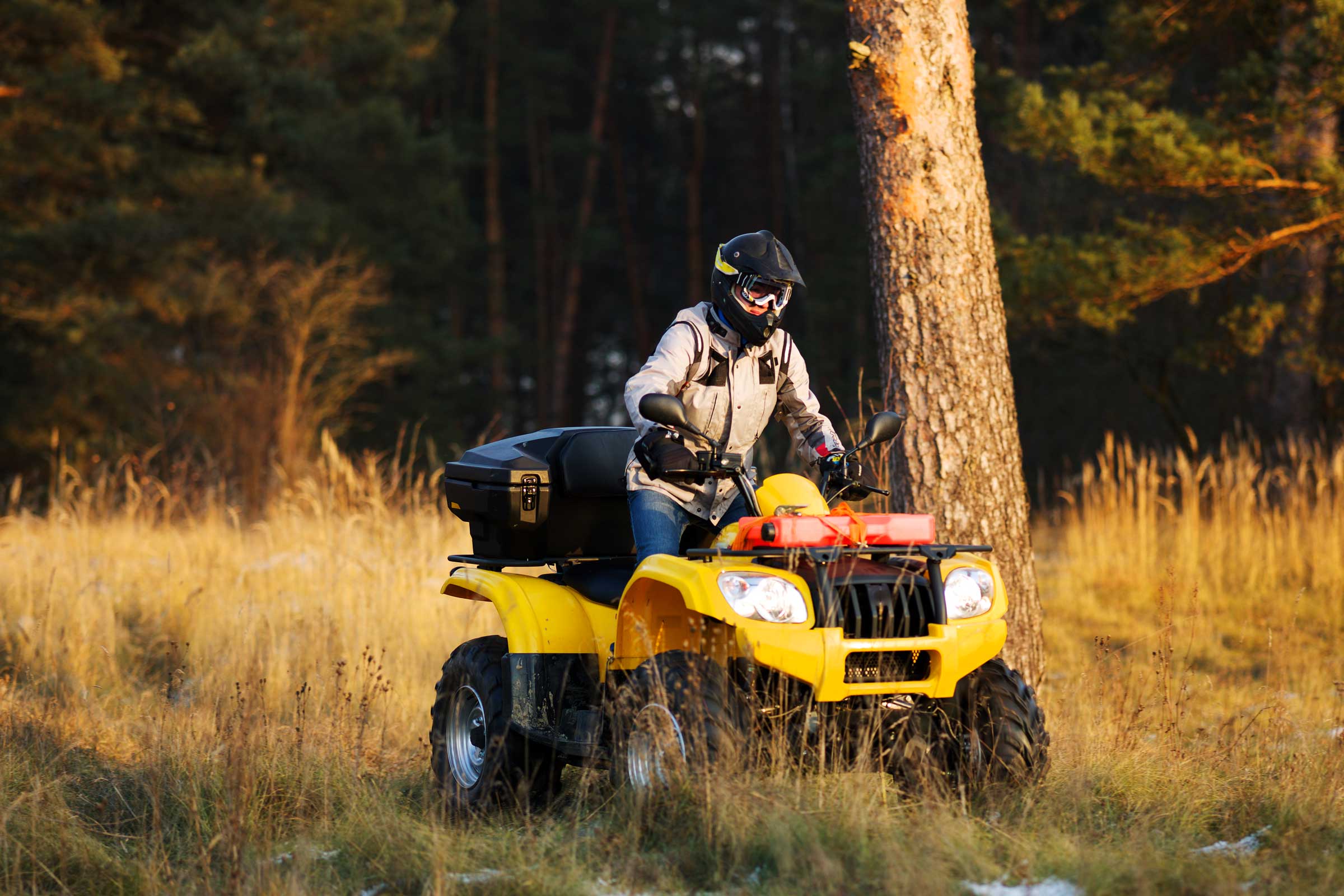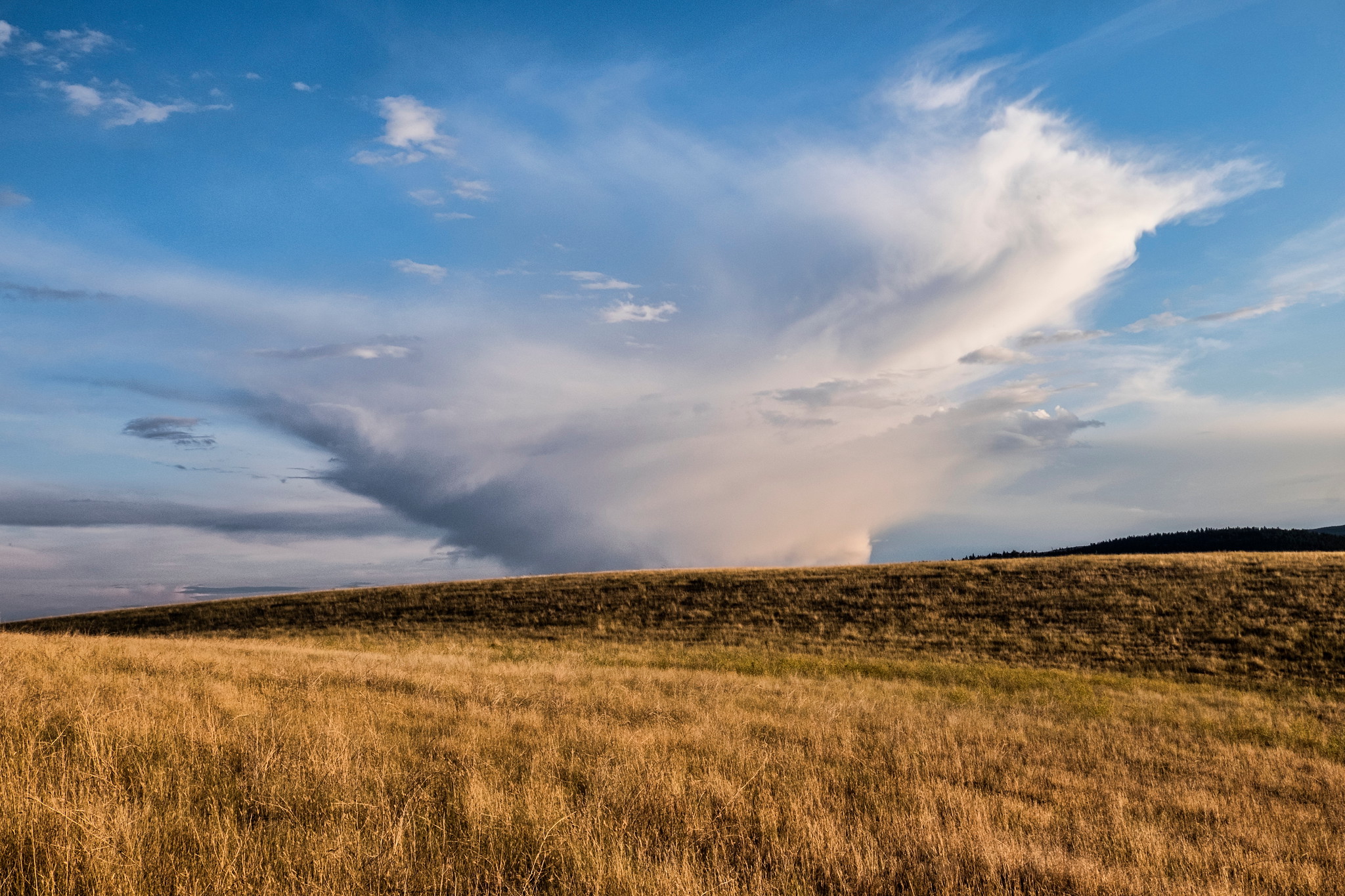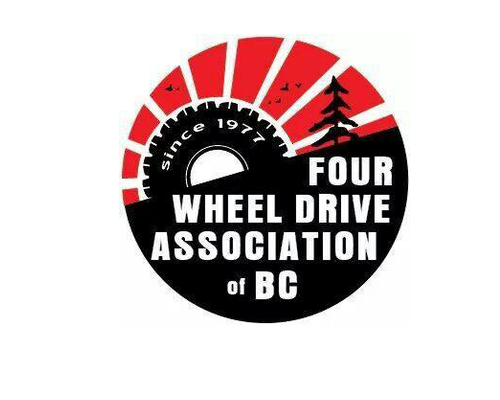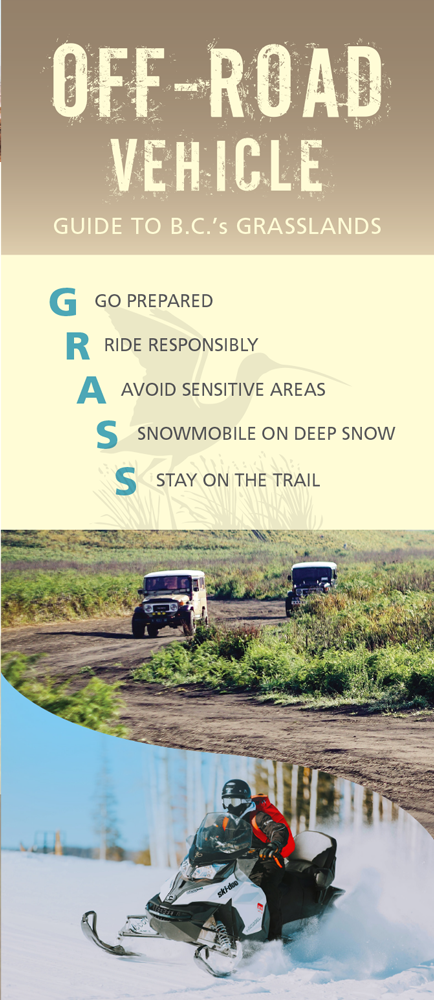Off-Road Vehicle Use in Grasslands
The recreational and commercial use of off-road vehicles (ORV) continues to grow in British Columbia and there is an ongoing need to promote their safe, responsible use.
Background
Grasslands are popular with ORV riders because of their limited tree cover and their close proximity to cities like Kamloops and Kelowna.
The Grasslands Conservation Council of British Columbia works closely with ORV organizations and recently republished the 2005 field guide, Best Management Practices for Motorized Recreation on BC’s Grasslands. These guidelines were developed in collaboration with motorized recreation organizations, First Nations, ranchers, conservation groups, and government agencies.

G.R.A.S.S. Campaign
The Grasslands Conservation Council of British Columbia promotes the responsible ORV use in grasslands through its G.R.A.S.S. campaign:
G – Go Prepared
R – Ride Responsibly
A – Avoid Sensitive Areas
S – Snowmobile on Deep Snow
S – Stay on the Trail
Interesting Fact – Have you tasted a cryptogamic crust?
It has nothing to do with pies… But you likely have tasted it if you have driven over a dusty trail in arid grasslands.
Cryptogamic crusts are thin layers of fungi, lichens, algae and bacteria that grow between clumps of grass on arid soils. These soil crusts play an important ecological role and they retain soil moisture, but they are easily damaged.
Cryptogamic crusts can repair themselves from the occasional impact of hooves and feet, but repeated disturbance by machines leaves the soil exposed to erosion and weeds.

Go Prepared
- Obtain maps and information from public agencies before you leave home; know the location of designated riding areas and trails
- Know how to operate your vehicle safely and take outdoor travel essentials
- Park, stage and re-fuel in designated parking areas or turnaround sites
- Always check for fire hazard closures and have a fire extinguisher available
- Keep your vehicle properly tuned and muffled to reduce noise
Avoid Sensitive Areas
- Avoid wetlands and riparian areas because they are important for controlling the flow of water over grasslands and are easily damaged
- Rock bluffs, talus slopes, silt cliffs and hoodoos are also important areas for many rare and endangered species
- Do not disturb or damage First Nation cultural sites, such as petroglyphs, or pick plants used for traditional purposes
Snowmobile in Deep Snow
- Only snowmobile where snow is >12” to avoid crushing, freezing or uprooting native grassland plants, compacting the soil, or spreading weeds
- Stay on managed or established trails,
or within designated areas - Avoid spilling fuel or oil while travelling over frozen waterways to prevent damage in the Spring
Ride Responsibly
- Do not cross private land without permission and stay off hayfields and forage crops
- Leave gates as you find them, and do not scare or make cattle or wildlife run
- Remove seeds and vegetation from tires, vehicles, clothes, and footwear after riding to prevent the spread of invasive plants
- Keep dry vegetation away from exhausts and engines to prevent fires
- Accelerate slowly to avoid spinning wheels and damaging the soil

Stay on the Trail
- Go over, not around, obstacles to avoid widening the trail; cross streams at designated fords, and when possible, avoid wet, muddy trails
- Do not create switchbacks, shortcuts, or new paths that others will follow
- Stay in the middle of trails and avoid trails narrower than your vehicle
- Prevent erosion by avoiding trails on steep slopes and in wet or muddy areas
Additional Resources








